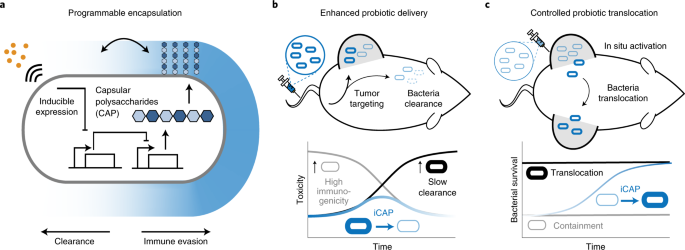2022-03-25 カリフォルニア大学バークレー校(UCB)
<関連情報>
- https://news.berkeley.edu/story_jump/success-treating-night-blindness-in-dogs-could-lead-to-human-gene-therapy/
- https://www.pnas.org/doi/full/10.1073/pnas.2117038119
AAV遺伝子治療によるON-bipolar細胞へのターゲティングがLRIT3による先天性定常性夜盲症を安定的に回復させること Targeting ON-bipolar cells by AAV gene therapy stably reverses LRIT3-congenital stationary night blindness
Keiko Miyadera , Evelyn Santana, Karolina Roszak, Sommer Iffrig, Meike Visel, Simone Iwabe, Ryan F. Boyd, Joshua T. Bartoe, Yu Sato, Alexa Gray, Ana Ripolles-Garcia , Valérie L. Dufour , Leah C. Byrne, John G. Flannery, William A. Beltran, and Gustavo D. Aguirre
Published:March 22, 2022

Abstract
Adeno-associated virus (AAV)–based gene therapies aimed at curing inherited retinal diseases to date have typically focused on photoreceptors and retinal pigmented epithelia within the relatively accessible outer retina. However, therapeutic targeting in diseases such as congenital stationary night blindness (CSNB) that involve defects in ON-bipolar cells (ON-BCs) within the midretina has been challenged by the relative inaccessibility of the target cell in intact retinas, the limited transduction efficiency of these cells by existing AAV serotypes, poor availability of established ON-BC–specific promoters, and the absence of appropriate patient-relevant large animal models. Here, we demonstrate safe and effective ON-BC targeting by AAV gene therapy in a recently characterized naturally occurring canine model of CSNB: leucine-rich repeat, immunoglobulin-like and transmembrane domain 3 (LRIT3)–CSNB. To effectively target ON-BCs, AAV capsid variants with ON-BC tropism and ON-BC–specific modified GRM6 promoters were adopted to ensure cell-specific transgene expression. Subretinal injection of one vector, AAVK9#4–shGRM6-cLRIT3-WPRE, significantly recovered rod-derived b-wave in all treated eyes (six of six) of adult dogs injected at 1 to 3 y of age. The robust therapeutic effect was evident 7 wk postinjection and sustained for at least 1 y in all treated eyes. Scotopic vision was significantly improved in treated eyes based on visually guided obstacle course navigation. Restoration of LRIT3 signals was confirmed by immunohistochemistry. Thus, we report ON-BC functional rescue in a large animal model using an AAV capsid variant and modified promoter construct optimized for ON-BC specificity, thereby establishing both proof of concept and a translational platform for treatment of CSNB in patients with defects in photoreceptor-to-bipolar signaling.


